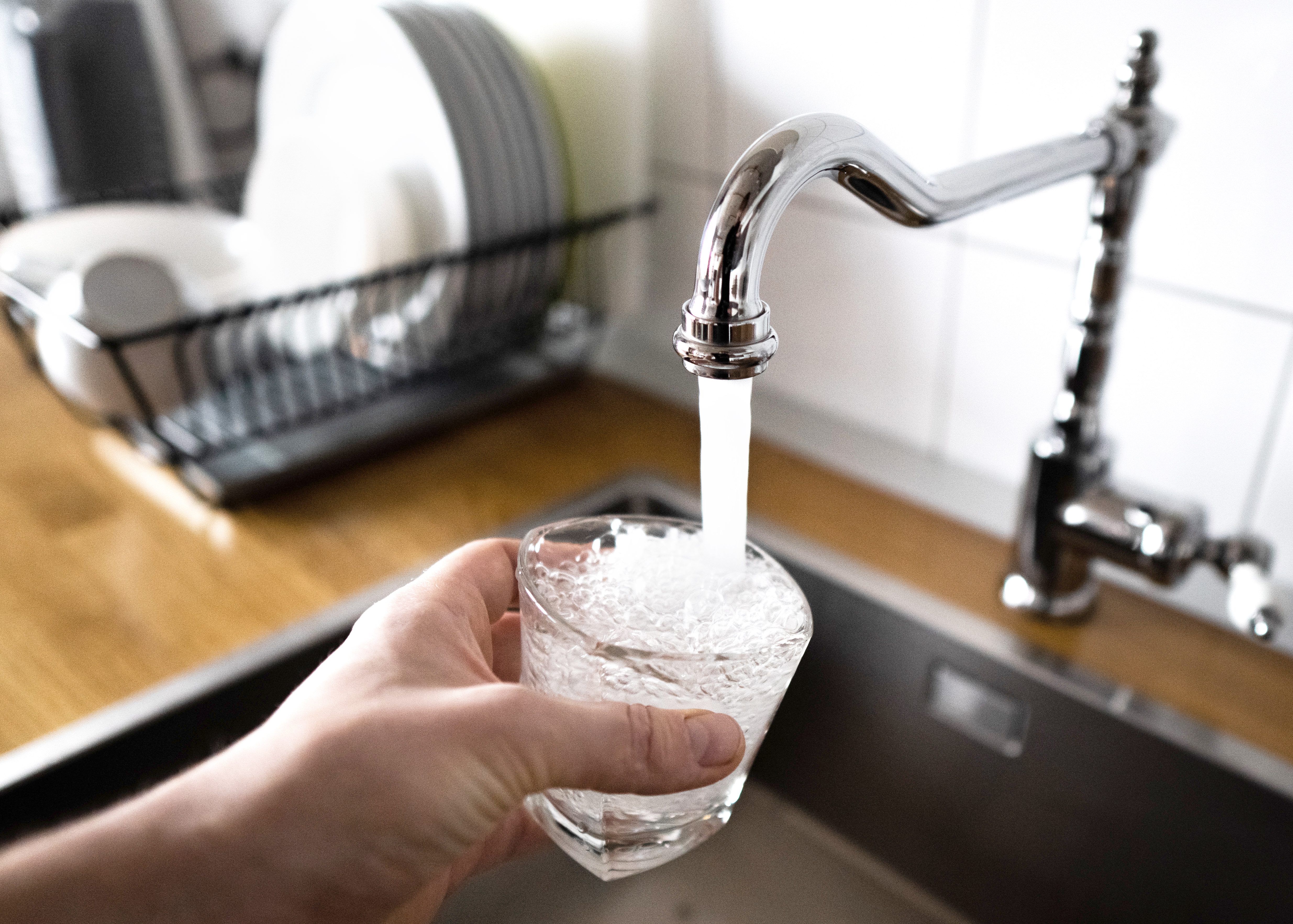
Discover the leading factors affecting your main water line replacement cost in Columbus, including length, material selection, and installation details.
Learn how to install a toilet, and you’ll be on a roll


Whether you’re moving into a new house or simply updating your bathroom, there are many reasons to upgrade your toilet. Installing one yourself saves money, but learning how is a delicate and time-consuming process with potential hurdles. If you’re an experienced DIYer with plenty of plumbing knowledge, here’s how to install a toilet in 11 steps.
Before replacing a toilet, get the “rough-in” measurement of the old one. The waste pipe sits about 12 inches from the wall for most toilets, but some models place this component 10 or 14 inches from the wall. Other measurements likely require specialty orders that drive up the price. To check this measurement, use a tape measure and go from the wall to the toilet’s hold-down bolts.
Note how far the toilet bowl protrudes from the wall and whether your current toilet has a round or elongated bowl. If you’re going from a standard toilet bowl to an elongated one, ensure you have at least 24 inches of clear space in front of the toilet and that the bathroom door has room to shut.
Remember, many toilets do not ship with seats or lids, so purchase some that fit your new toilet model. When in doubt, measure the circumference of your bowl and have that information handy while shopping.
Finally, consider getting a toilet equipped with brass bolts for the installation. Check the label to ensure they’re not bolts with a zinc coating that looks brass. Bolts made from brass are rust-resistant and easier to cut off later when doing repairs.

The first step is safely removing the old toilet. Skip this step if you’re moving into a new home with an unfinished bathroom.
Start by turning off the water at the shut-off valve near the toilet, flush the toilet to drain any excess water, and use a plunger to force any stubborn liquid down the drain line.
Use an adjustable wrench to disconnect the supply line. Loosening these screws may be difficult; use a penetrating oil to break down corrosion if needed. Catch and wipe up any water leaking from the line with a rag.
If you have a two-piece toilet, remove the bolts connecting the tank to the bowl with the wrench. Then lift the tank and set it aside. If you purchased a one-piece model, skip this step.
Pop open the bolt caps that connect the bowl to the floor with a flathead screwdriver. Remove the bolts, nuts, and any washers. Turn the screws to create some space between the bolts and the floor, and use a hacksaw to cut the bolts off. Remove any caulk around the base with a utility knife.
Gently rock the toilet bowl back and forth until any sealant breaks, and lift it to expose the old toilet seal. Remove this wax seal with a putty knife, and wipe away any excess wax with a damp rag. Stuff a rag into the open line to prevent sewer gasses from entering the home.
The toilet flange provides a connection point for hardware, allowing you to secure the toilet to the drainpipe in the floor. If the flange and its bolts are in good shape, continue to use the pre-existing components with the new toilet; if you notice cracks or any other troubling signs, replace it with a matching flange. If you’re unsure which replacement flange to buy, snap a photo before going to the hardware store.
As for the replacement process, use the adjustable wrench to loosen and remove the bolts and apply penetrating oil if it’s rusted in place.
If replacing the flange, start by installing new bolts at the base. Place each bolt slowly and carefully, using an adjustable wrench to tighten them. These bolts will act as an anchor for the bowl later in the installation process.
Now it’s time to start installing the toilet seal or wax ring. Placing the seal or ring directly on the flange is the easiest method. However, it doesn’t account for proper bowl positioning, which could lead to potential trouble later on.
Here is a slightly more complicated procedure that ensures your bowl and flange integrate perfectly. Rest the new bowl on its side on a padded surface to protect the toilet and flooring. Attach the replacement seal to the bottom of the bowl instead of the top of the flange, and position the bowl over the flange to find that perfect spot for the tightest seal.

Once you finish removing the old toilet and prepping the flange, position the bowl over the flange’s bolt holes until they’re aligned. Try holding the bowl by the inside rim to get a better grip. Once aligned, press down to push the bolts through the bolt holes on the bowl.
Continue to press down to set the seal. Then don’t move or tilt the toilet bowl to prevent damage to the ring or seal. This kind of damage leads to leaks in the future, but it’s possible to repair leaks coming from the tank bolts.
Now that the bowl is connected to the flange, move on to the other connections to finish securing the fixture. Start by installing a washer and nut on each toilet bowl bolt located on the exterior corners of the base.
Tighten each nut evenly onto the bolts, alternating from one side of the toilet to the other. Go slowly and work from bolt to bolt, tightening little by little. Don’t overtighten these bolts, as this could damage the bowl. Also, resist the temptation to caulk the bottom of the bowl now. Wait until after testing for leaks.
If these bolts extend far above the top of the washers and nuts, cut off any excess with a hacksaw.
A toilet bowl is nothing without its tank, so make the necessary connections. Install the tank-to-bowl gasket at the bottom of the tank (onto the base of the flush valve). However, some toilets ship with this gasket already attached. Check the instructions for more information on your specific model. If needed, you can replace a toilet flush valve seal yourself.
Insert the tank bolts and washers on the inside of the tank, so they extend out. Set the tank on the bowl, aligning the bolts with the holes on top of the bowl. If these bolts extend too far over the washers and nuts.
Tighten each tank bolt using the same alternating method as with the bowl bolts. Go from one to the other, tightening each a little bit at a time. Stop when the tank pulls down and meets the bowl, offering a secure attachment.

Attach the supply line from the wall to the exposed portion of the fill valve that sticks out from the bottom of the tank. Tighten both ends with an adjustable wrench, but be careful not to overtighten.
Follow the instructions accompanying the seat or lid. These components typically screw in place once properly positioned, though specialty items like raised or heated seats often require special installation requirements.
If you have a bidet attachment, install it before attaching the seat. The cost of a bidet attachment averages about $80 to $120.
Slowly turn on the water at the supply line and let the tank fill up. Keep an eye out for any leaks. Next, flush the toilet and inspect the base and the areas where the tank and bowl meet for leaks. If everything looks good, you have successfully installed a toilet!

To prevent future leaks and add stability, caulk the base. Use a caulking gun, go slowly, and allow plenty of time for the caulk to set and dry.
Hiring a pro to install a new toilet costs $370 on average, leading many homeowners to consider a DIY replacement. If you replace the toilet flange yourself, it should cost about $7 to $20 for materials, while the average price to replace a toilet flange is about $145 to $165 if you hire a pro.
Whether you’re budgeting for the cost to add a bathroom to your home or installing a bathroom in your finished basement, a DIY toilet installation is worthwhile for those with plenty of plumbing experience and the know-how to use a hacksaw and related tools. However, if an improper installation goes wrong, you may end up with higher costs for leaks, water damage, and replacement parts.
Consider hiring a pro who can help with early leak and mold detection, get the proper measurements for your new toilet, and stay in compliance with building codes. If you’re brimming with confidence, go for it. If not, consider hiring a licensed plumber.
A toilet’s rough-in dimensions match up with the location of the waste pipe and flange assembly. These dimensions help ensure that your toilet is the correct distance from any walls or doors. The measurements vary depending on your toilet, but there are some common rough-in measurements to shoot for.
12 inches from the finished wall behind the toilet to the center of the waste line
15 inches from the center of the toilet to the nearest side wall
At least 24 inches of clear space in front of the toilet
Toilets come in many designs these days, and there is no universal best option for choosing a toilet; your personal preferences and the size of your space may determine which toilet you choose. For instance, elongated toilets allow for more sitting room than round toilets but extend further into the bathroom. The standard toilet height is around 16 1/2 inches, but this may be too low for taller individuals or older adults.
From average costs to expert advice, get all the answers you need to get your job done.

Discover the leading factors affecting your main water line replacement cost in Columbus, including length, material selection, and installation details.

Learn about main water line repair costs in Columbus and what affects pricing to be prepared before you start getting estimates.

Learn how much plumbers cost in Columbus, Ohio. Discover pricing for faucet repairs, pipe work, and emergency services, plus how you can save money.

Slow drains and foul smells are telltale signs of a clogged plumbing vent. Find out how to unclog a plumbing vent without getting on the roof in this guide.

Finding frozen pipes involves using all of your senses to listen for, smell, and see the signs. Keep reading to learn how to find frozen pipes in your home.

If your tub stopper is ruining bathtime or it’s time for a new one, you can easily DIY the job. Keep reading to discover how to remove a bathtub drain stopper.